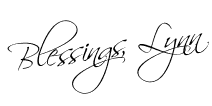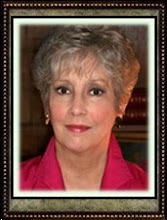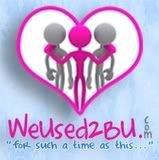Saturday, December 5
 It is my pleasure to bring you Frank Ball’s blog tour for his book Eyewitness: The Life of Christ Told in One Story by Frank Ball (WinePress Publishing). If you would like to be in the drawing for the book, please leave a comment at the end of this post.
It is my pleasure to bring you Frank Ball’s blog tour for his book Eyewitness: The Life of Christ Told in One Story by Frank Ball (WinePress Publishing). If you would like to be in the drawing for the book, please leave a comment at the end of this post. About the book…
Eyewitness reaches people who seldom go to church or read their Bibles. It compiles the information from the Gospels and hundreds of other Bible verses into one chronological story laid out like a story without reference or verse. The result is a seamless combination of the four gospel books that will appeal to customers across the board, even those who would not normally purchase a Bible.
About the author…
Frank Ball was the Pastor of Biblical Research and Writing at Anchor Church in Keller, Texas, for three years. After thirty years of research and teaching the life of Christ, he began a twelve-year project to analyze every gospel story about Christ and put the events into chronological order.
Ball says that this project wasn’t his idea at all. He just had an unexplainable desire to do this chronology, and along the way he realized that God had a plan.
The interview…
1. The gospel stories have existed for some two thousand years. Why put them chronologically together now?
Nine out of ten Americans own a Bible, but the people who most need to hear the message don’t often read the book. They believe Scripture is outdated and too difficult to understand. Would they read the story of Christ if it were presented as a single story that is easy to understand? Most of them say they would, so Eyewitness answers that need.
2. Why do the Gospels appear to have conflicting stories?
At a crime scene, eyewitnesses always have different testimonies about what happened. Because each gospel writer had his own point of view and spoke to a different audience, the information is actually complementary, not conflicting. The apparent conflicts disappear when we use each viewpoint to compile a complete and compelling story.
3. How was writing and recording events different two thousand years ago?
We now use a computer keyboard to rapidly type and edit text that prints on our laser printers. In the first century, writers had only their parchment scrolls in which every word was hand written, one character at a time. Cut-and-paste editing and simple rearrangement of details into chronological order didn’t exist. Writers naturally put down information as it came to mind, giving us a flow of thought that isn’t always in date sequence.
4. What is the significance of John’s gospel being the last one written?
If John were to introduce his book to us today, he might say, “Let me tell you the rest of the story.” There wasn’t much need to repeat what had already been written, so he gives us clarification of events that were already being told and retold, as well as eyewitness reports that are found nowhere else. Unlike the other writers, who were not always chronological, John unfolds most of his story in date sequence in relation to the Jewish feasts. This gives us a chronological guide for putting all the biblical information in order.
5. In what way do you think the readers of Eyewitness will have a clearer understanding of the nature of God?
Jesus said, “Anyone who has seen me has seen the Father.” If we can see what Jesus is doing and hear what he is saying, we become eyewitness of God’s nature. Because the words in Eyewitness are more like what we would read in a novel, readers are able to visualize themselves as present at the gospel events. It’s the next best thing to actually being there, walking with the other disciples.
6. How many different Bible translations were necessary to complete this project?
Hundreds of scholars have invested countless hours in the production of good translations. In the development of an easy-to-read wording for Eyewitness, translators’ handbooks and more than fifteen popular translations, as well as the Greek and Hebrew texts, were considered.
7. Is the Bible flawed in presenting the life of Christ in four separate books?
No, not at all. Each author’s report has its own perspective and meets a different audience need. Matthew points to the fulfillment of ancient prophecies to prove Jesus was the Son of God. Mark, the shortest of the Gospels, is the quickest to read. Luke, being a physician, gives many important details. And John adds clarity, chronology, and new information. Eyewitness was written for those who don’t read the Bible and for people who are helped by seeing how the story unfolded, chronologically.
8. Why do you think Eyewitness appeals to people who seldom attend church?
Even professed atheists and agnostics have questions about the meaning of life and what happens after we die. Eyewitness isn’t a book of difficult-to-understand rules that threatens punishment if we don’t do everything exactly right. The life of Christ is presented in a way so people can easily understand the value of loving our enemies and helping people in need.
9. Where can we find out more or purchase a copy of Eyewitness?
Please feel free to visit my web site at www.eyewitnesstools.com.
If you would like to have Frank speak to your group, church, or writers conference, click here.

































I'll throw my hat into the ring for a shot at the book. Franks approach to the gospels is pretty unique.
Good morning, Lynn;
I enjoy reading the Narrated Bible's synergy of the gospels, so I'm sure that I would learn something from Eyewitness, too.
Thanks for introducing this book to me.
Be blessed,
Lynnda
I know someone who would benefit from "Eyewitness." How interesting that the author would just be moved to study in this way and write a book that has the potential to reach many who would not normally read the Bible.
I love the way God works and love it even more when His people obey.
Thanks for sharing this, Lynn.
Blessings,
Melinda
Hi Lynn,
Since I have lost loved ones who don't read the Bible, this might be the perfect book for them. I loved the interview and what he had to share.
I've thought of you lately and will update you soon via email.
Blessings and hugs to you my friend,
Debbie
Hi Lynn,
My dad could really use this book. He acknowledges Christ as Lord in his heart but not his heart.
Thank you for your beautiful blog.
Blessings, Lucy
P.S. Now I have Twitter nose. :-)